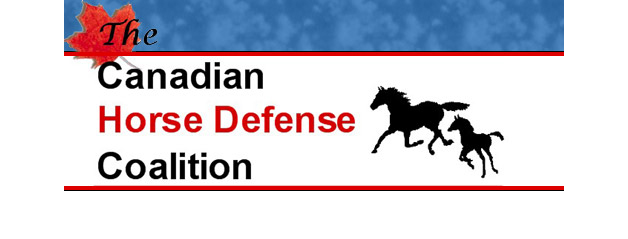Last fall, the not-for-profit animal protection group, the Canadian Horse Defence Coalition (CHDC), filed for judicial review in the Federal Court. The lawsuit challenges violations of two sections of the Health of Animals Regulations (HAR) and names the Minister of Agriculture and Agri-Food as the respondent. The Canadian Food Inspection Agency (CFIA) is responsible for the administration and enforcement of the Health of Animals Act and the HAR.
“The law in regard to the live export of horses for slaughter is clear. Sections 141(8) and 142(a) of the Health of Animals Regulations say that horses over 14 hands in height [the size of a large pony] must be segregated, and horses must be able to stand in a natural position. These provisions exist to ensure the humane transport of horses, yet the CFIA consistently violates the law by allowing the overcrowding of horses and by allowing horses’ heads to touch the tops of crates, when live horses are shipped by air cargo to Japan for slaughter,” states the lawyer for the CHDC, Rebeka Breder.
Since 2012, the CHDC has studied conditions under which live horses are exported to Japan for human consumption. Photographic and video evidence has consistently revealed that even large draft horses have been crammed together for export purposes, sometimes as many as three or four per wooden crate, and that the ears of very tall horses have been seen to breach the netting covering the tops of crates. There is also evidence of horses dying and injuring themselves.
In a June 17th court filing, the CFIA defended it’s equine transport and enforcement policies and said the lawsuit is based on “cultural norms” and CHDC’s interpretation of what is, and is not, an appropriate food animal.
“However, the inevitable reality is that the CFIA’s role, on the facts of this case, is to determine whether the horses are healthy for export and are being safely transported,” the filing said. “There is no requirement on the CFIA to obtain a particular enforcement result and it is well recognized that perfection in enforcement can never be more than an unattainable goal.”
The CHDC is concerned that new rules, which come into effect in 2020, will further stress animals, because horses will no longer be required to be segregated from each other during transport. While this change is intended to reduce stress for the horses during travel, it could lead to injury.
At this point, said Sinikka Crosland, Executive Director of CHDC, they are “waiting to hear about a date for the final hearing, as all final arguments have been filed by both sides. Cross-examinations of Dr. Cornelius Kiley of the CFIA were completed in March of this year.”
She added, “This legal challenge certainly pits David against Goliath. But the CFIA is not above the law. The government has certain legal and ethical obligations, which cannot be swept under the rug.”
More from Canadian Thoroughbred:






